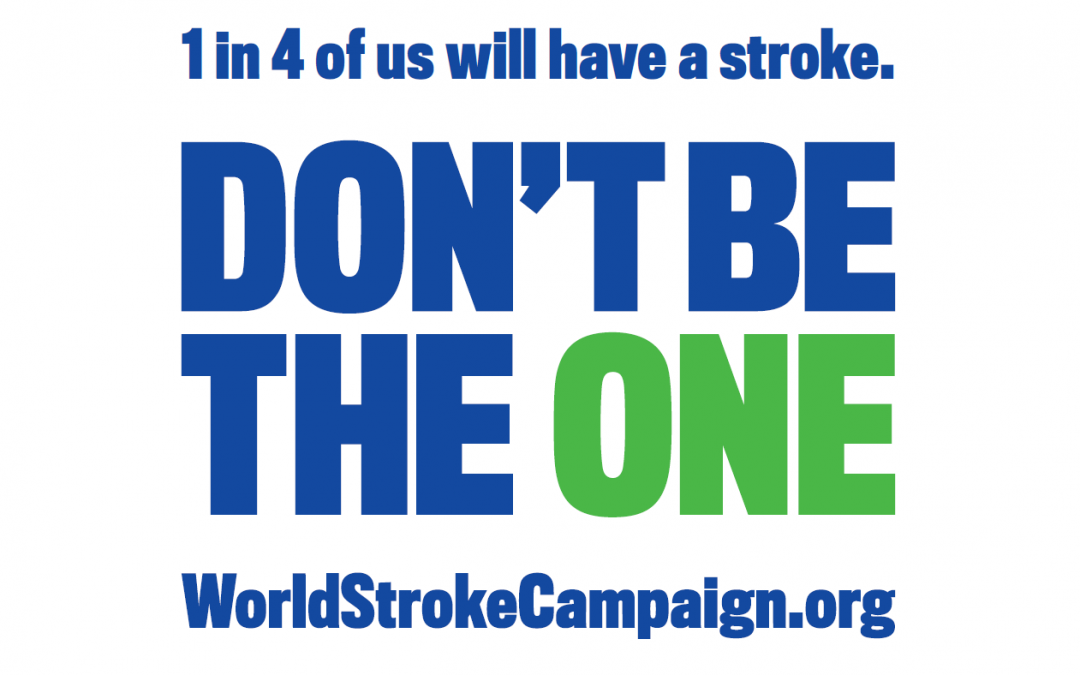
Oct 1, 2019
To help create a buzz and to drive awareness of risks and prevention a number of stroke organisations around the world are quite literally flying the flag for our ‘Don’t Be The One’ campaign at their events to mark World Stroke Day. These events will be shared on social media as part of a virtual relay. SAFE and WSO are calling upon member organisations to register their plans for the Relay on the Global Map of Action on the World Stroke Campaign website, as well as any other plans they might have for World Stroke Day events and activities.
To help show that an event is part of a global campaign effort and the relay the WSO has produced some assets (attached under links below):
On the day of your event, take high resolution photos of local participants with the campaign flag and share them with Sarah Belson from the World Stroke Organisation directly at Sarah.Belson@stroke.org.uk. If you have social media be sure to share photos from the event using the campaign hashtag #DontBeTheOne so that the WSO and SAFE can share content on their Twitter and Facebook channels.
In addition to supporting the World Stroke Campaign, SAFE would like to invite you to visit a website for stroke prevention (www.strokeprevention.info) now available in five additional European languages: French, Polish, Portuguese, Russian and Spanish. You can learn about 10 modifiable stroke risk factors and start taking actions today to reduce your own risk of stroke. You can support SAFE by spreading the news about this website and following us on social media, Facebook and Twitter. Show us your support by using the #StrokePrevention hashtag.
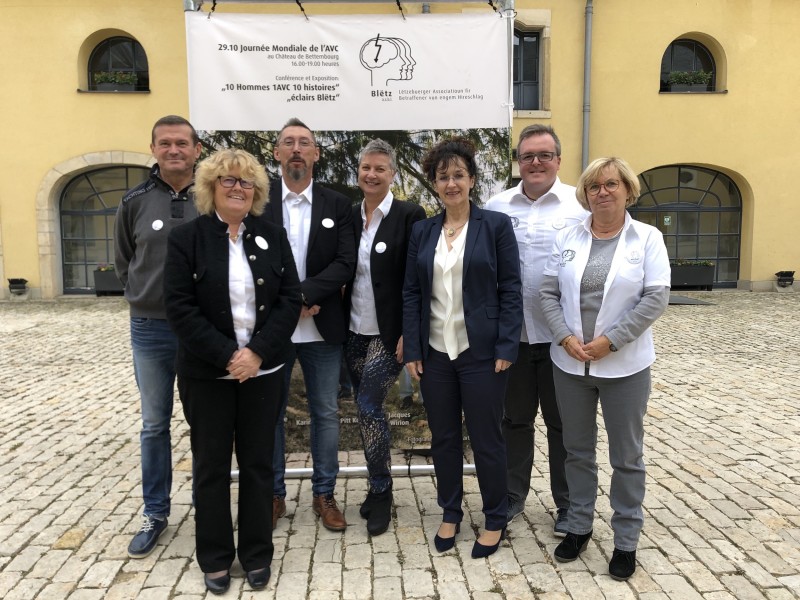
Sep 27, 2019
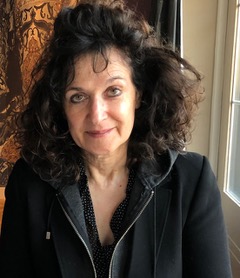
Chantal Keller, President of Blëtz Asbl
“Luxembourg needs an intensive aftercare centre where patients can go for three to six weeks in the mornings as well as in the evenings to receive an ongoing aftercare treatment for physiotherapy, speech therapy, occupational therapy in addition to psychological therapy. We also want families and friends to get the psychological support. Last but not least the patients need to be supported and assisted in being reintegrated back into the workplace” said Chantal Keller, the President of Blëtz Asbl, stroke support organisation from Luxembourg, a member of SAFE.
SAFE: What is the one issue related to the life after stroke in your country that you think needs special attention?
CK: The single most important issue in Luxembourg is that there is no intensive aftercare centre for stroke victims.
The current structure for stroke victims aftercare which is in place is that there are four rehabilitation centres which are located in the city of Luxembourg, Dudelange, Wiltz and Steinfort. They offer aftercare treatment for a period ranging from six months up to a maximum of twelve months.
At the moment the only aftercare structure which is available after the rehabilitation centre is in the form of an out-patient treatment at the physiotherapist as well as the speech therapist. These out-patient treatments mean that the stroke patient is dependent on a member of the family to take them there as taxis are not reimbursed by the Caisse Nationale de Santé (CNS) – the Luxembourgish Health Service. In addition to this the cost of other necessary aftercare treatments such as occupational therapy or going to the psychologist are not covered.
SAFE: What would be the solution, i.e. what is your organization’s position regarding this issue?
CK: Blëtz Asbl. Is actively working on setting up meetings and progressing with our goal which is to be able to offer an intensive aftercare stoke victims centre in Luxembourg. To date, we have the support and are under the high patronage of Her Royal Highness the Hereditary Grand Duchess.
We have also had meetings with the mayor of the commune of Bettembourg, Mr. Claude Zeimetz as well as with the mayor of the commune Mondorf-les-Bains, Mr. Steve Reckel in order to introduce and advance the urgent need for Luxembourg to have an intensive aftercare centre. In addition to this we are in the process of getting a meeting in place with the Finance Minister of Luxembourg, Mr. Pierre Gramegna. On the 30th of September we have a meeting with the Health Minister of Luxembourg, Dr. Jean-Claude Schmit.
Furthermore, we are currently in the process of getting stroke units certified in four hospitals, namely in the Centre Hospitalier Emile Mayrisch, Esch-sur-Alzette, Centre Hospitalier de Luxembourg, Hôpital Kirchberg which are both in Luxembourg city as well as the Centre Hospitalier du Nord, Ettelbruck.
Blëtz Asbl. Is actively promoting medical and scientific research. On the 27th of October, the World Action Day for Stroke Victims, we are pleased to be able to announce a conference with Dr. rer. Medic. Marcus Wagner, MPH, a senior expert from Stiftung Deutsche Schlaganfall-Hilfe. He was formerly the President from 2008 – 2013 of the Europäische Schlaganfallpatienten-Organisation Stroke Alliance for Europe (SAFE) and is the Vice President of this organization since 2016. At this conference we will be showing a film from the Stroke Alliance which will be adapted for Luxembourg as well as having the world première performance of a song written by Claudine Muno, accompanied by Remo Cavallini about aphasie which has been commissioned and composed for Blëtz Asbl.
SAFE: Please tell us more about your organization.
CK: Blëtz Asbl was founded in 2013 by me, Chantal Keller, who was affected by a stroke, in addition to Marc Schommer, a stroke survivor and Claudia Heiderscheidt-Landa, whose husband suffered from a stroke.
Blëtz Asbl’s mission is to help and to offer support to stroke and aphasia patients, their families and friends. We wish to raise awareness and to offer information to patients with brain injuries as well as giving them support for their individual needs.
More about Blëtz Asbl
A book called “You have to be a fighter! Life after a stroke” has been published by Chantal Keller, President of Blëtz Asbl. And contains firsthand accounts of human beings who share their stories and show how much human potential there is for resistance and creativity in the face of adversity.
A stroke is a major traumatic event in the lives of those effected, their families and friends. Blëtz Asbl runs a helpline and offers support. Personal meetings can be arranged.
Blëtz Asbl also promotes medical and scientific research in this particular area.
And finally, every month Blëtz Asbl hosts an open day which covers different themes related to stroke and aphasia patients.
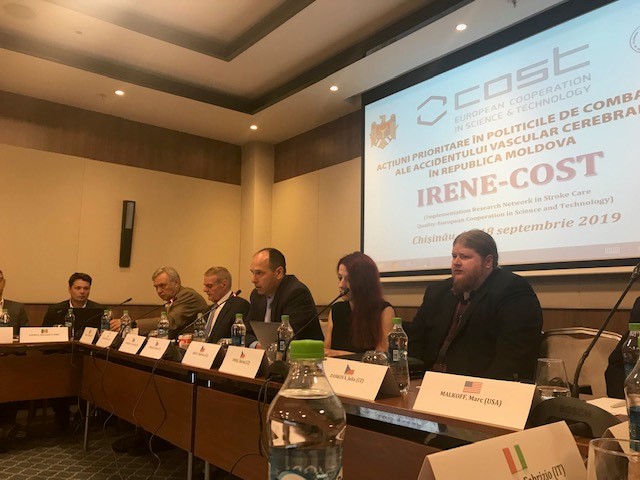
Sep 23, 2019
Written by Prof. Anita Arsovska, MD, PhD, FESO, SAFE Board member
The Management Committee Meeting of IRENE COST Action took place in Chisinau, Moldova, 16th-17th of September 2019, hosted by Prof. Stanislav Groppa, attended by 46 delegates from 26 countries (several SAFE members), chaired and co-chaired by Robert Mikulik and Natan Bornstein, respectively.
Based on the principles of ESO-EAST platform which was created by Prof. Valeria Caso and the efforts of the Steering Committee, and also formation of RES-Q database, IRENE stands for Implementation Research Network in Stroke Care Quality. ESO and SAFE have been working together more closely in the previous years, especially since signing of the Memorandum of Understanding during ESOC 2017 in order to improve stroke care in many European countries. Effective methods for stroke treatment exist; however the implementation of these treatment methods is very low and therefore constitutes the most challenging problem in current stroke management. In many countries and many hospitals, patients do not receive effective treatment because implementation framework is missing.
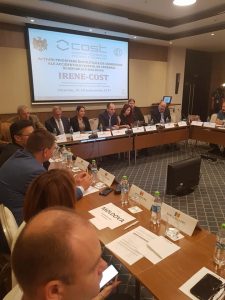
Image credits: Yuriy Flomin; Source: Facebook
During the meeting, Veronika Svobodova (Grant Manager) stated that the core activity of the IRENE COST Action is to improve public health through; a) Networking which will facilitate understanding of contextual factors, in between-country differences in innovation-values fit and implementation climate, b) a quality registry that will provide a cohesive picture of the implementation of stroke treatments; followed by c) the dissemination of results to the main stakeholders (e.g. hospitals and Ministries of Health) to implement new mechanisms to improve the outcome of stroke.
The IRENE COST Action will be conducted mainly in European countries where the burden of stroke is higher, while quality of stroke care is lower and resources for healthcare are less developed compared to other European countries. IRENE COST Action will alleviate disparities in stroke care and improve outcomes after stroke. IRENE COST Action is a platform for networking with defined goals.
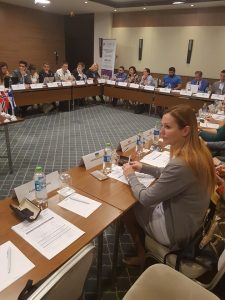
Image credits: Yuriy Flomin; Source: Facebook
One of the main Capacity Building Objectives is to develop tools for increasing professional skills and knowledge of IRENE COST and sharing best practice between COST members during the IRENE COST Action period. Actually, the first IRENE COST Training school “Communicating scientific data and results to the public” will be organized by SAFE’s Vice-President Markus Wagner in March next year, in his hometown Gütersloh, Germany where together with other experienced speakers he will share his rich experience and knowledge within the German Stroke Foundation in terms of improving the communication of science to the pubic and journalists. During the first day of the Training School- Principles, examples, tips and tricks in Scientific communication will be shared and during the second day lectures regarding Implementing of Stroke Services (experience from Germany), Communication and campaigning, Certification and Quality indicators will be held, presenting the the political work of SAFE in Brussels using data from the Burden of Stroke / Economic burden of Stroke and Stroke Action Plan For Europe (SAFE/ESO).
Overall, the two days intensive meeting was an excellent opportunity to meet with colleagues, make plans for future collaboration, exchange knowledge, and also and great inspiration to continue to work in order to improve the quality of stroke care in each country involved. All delegates enjoyed the warm hospitality of Prof. Stanislav Groppa and his team and were delighted by the charming city of Chisinau and its natural beauties.
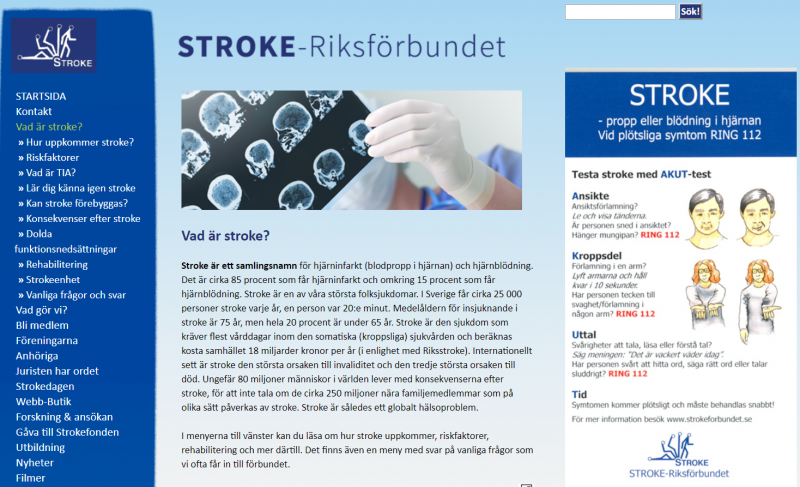
Sep 20, 2019
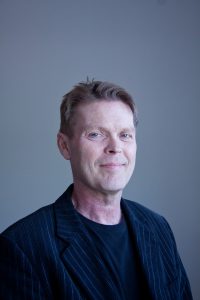
Kjell Holm, General Manager of the Swedish stroke association STROKE-Riksförbundet
The number of people suffering strokes in Sweden is declining with 600 fewer cases in 2017 compared to the year before. On top of that, many people think that Scandinavian countries have everything perfectly set up when it comes to stroke and the entire stroke care pathway, from prevention to life after stroke. This week, SAFE spoke with Kjell Holm, General Manager of the Swedish stroke association STROKE-Riksförbundet, who told us about some room for improvement.
SAFE: What is one issue related to the life after stroke in your country that you think needs special attention?
KH: A system for follow-up after stroke. Many stroke-survivors are not provided with rehabilitation after stroke and don’t know where to apply for it. The Stroke-survivor and carers also need a healthcare contact after stroke to talk about their needs and new situation.
SAFE: What would be the solution, i.e. what is your organisation’s position regarding this issue?
KH: The Swedish Stroke association focuses on and highlights on a system for follow up after stroke for all patients. One tool is the “Post Stroke Check List” and an individual plan for the follow up and rehabilitation.
SAFE: Please tell us more about your organisation.
KH: The Swedish Stroke association started in 1983 and has now 9000 members and 83 associations/clubs all over Sweden. We also have a Stroke fond that contributes to stroke science with 3 000 000-4 500 000 Kronor each year. We are included in providing stroke education for the staff in the stroke healthcare. We distribute a lot of stroke information as books, films, papers, leaflets, website, pod, YouTube, twitter. We also write articles and have meetings with the politicians and decision-makers.
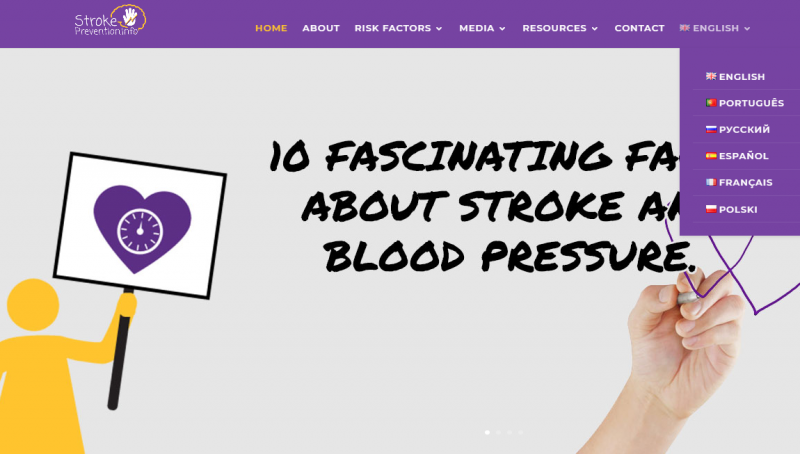
Sep 17, 2019
A useful repository for reliable and easy to use information on 10 modifiable stroke risk factors translated to Polish, Spanish, Portuguese, Russian and French.
Brussels, 17/09/2019: A SAFE-owned website on stroke prevention and modifiable stroke risk factors goes live today at www.strokeprevention.info in five additional European languages: Polish, Spanish, Portuguese, Russian and French.
Increasing the number of languages on this website will allow greater accessibility of its content for millions of people who speak these languages, alongside the website’s original language, English.
Around 17 million strokes occur worldwide each year, despite compelling evidence that it is a largely preventable condition. Stroke shares risk factors with other cardiovascular diseases (CVDs) and with many other non-infectious, or non-communicable diseases (NCDs). Addressing stroke risk factors requires both individual and society level interventions – addressing lifestyle and medical issues. This knowledge motivated SAFE to create the website www.strokeprevention.info. The aim of this website is to inform and inspire people to take individual interventions, such as giving up smoking or taking better control over their blood pressure and take an active role in preventing stroke.
Based on the INTERSTROKE study’s findings, ten modifiable risk factors are responsible for 90% of strokes. This website collates all relevant information on the most common risk factors such as: hypertension, physical activity, diet, obesity, smoking, cholesterol, heart disease, alcohol, stress and diabetes. In addition to being written in a lay-friendly language, all website information is in a format appropriate for people with disabilities.
This website is developed and owned by Stroke Alliance for Europe (SAFE), which retains full editorial control over the content.
The original version of this website was originally launched in English in 2018 and was supported by an educational grant from Amgen. The translation into five European languages was enabled by Boehringer Ingelheim in 2019. SAFE is grateful to the generous supporters of its work, which enables important stroke prevention information to reach wider audiences.
About SAFE
The Stroke Alliance for Europe (SAFE) a non-profit-making organization formed in 2004. It is the voice of stroke patients in Europe, representing a range of patient groups from 30 European countries. SAFE’s goal is to decrease the number of strokes in Europe by advocating for better prevention, access to adequate treatment, post-stroke care and rehabilitation.
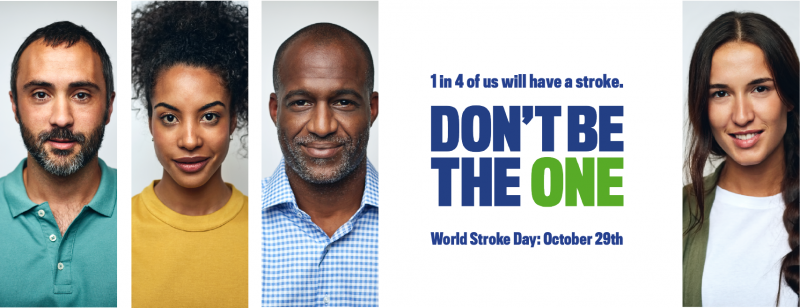
Sep 13, 2019
World Stroke Day 2019 to focus on stroke risk and prevention
The World Stroke Organization has announced the theme for World Stroke Day 2019. With a focus on stroke prevention, the ‘Don’t be the One’ campaign aims to raise awareness of our individual lifetime risk of stroke and to equip as many people as possible with potentially life-saving prevention information and tools.
The rationale for the campaign message is the recent WSO analysis of the Global Burden of Disease, which shows that globally the lifetime risk of stroke has risen and now stands at 1 in 4. Combined with the Interstroke findings that showed around 90% of strokes are linked to a small number of easily addressed risk factors, the potential impact of public understanding of stroke risk and prevention awareness is clear.
Speaking about the World Stroke Day campaign theme, World Stroke Organization Vice President and Campaign Committee co-Chair, Sheila Martins said ‘For me the 29th October is always such an exciting day for the stroke community – it’s the one day of the year that we can come together globally and to make as many people as possible aware of stroke. This year our message When it comes to stroke, think prevention – Don’t be the one.’ is relevant and essential to everyone and we look forward to seeing the stroke community taking up the campaign in countries around the world!’
Co-Chair Deidre De Silva and a leading awareness campaigner Singapore ‘Our team strived to deliver a campaign that will resonate with diverse populations around the world. Stroke is not prevented by hoping it will never happen to you. The campaign encourages everyone to be proactive by understanding their stroke risk and taking the steps to prevent stroke and its devastating consequences.’
World Stroke Day Campaign Resources
A campaign guide for members and the public will provide guidance on how to join the global prevention awareness effort. This will be available from the revamped World Stroke Day website. Members and partners will have access to campaign resources including the campaign video, gifs, editable posters, infographics, social media posts and translated prevention factsheets.
Stroke Riskometer
The Campaign team is also working in close partnership with the Stroke Riskometer team at Auckland University of Technology to promote the WSO endorsed Stroke Riskometer as a tool to understand individual stroke risk and to identify individual risk factors. Riskometer users will be encouraged to conduct their own risk assessment and to share the app on social media tagging four friends. If one person who is tagged downloads and uses the app, they will have free access to an app upgrade that will support them to take appropriate action to reduce their stroke risk.
The Campaign Committee is reaching out to members and supporters asking you to mobilise your global stroke ambassador and influencer network to help us get our potentially life-saving message to as many people as possible.
Please contact awiseman@kenes.com to dicuss further.














